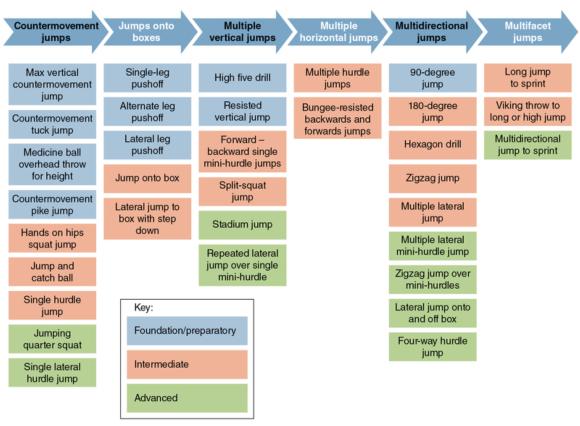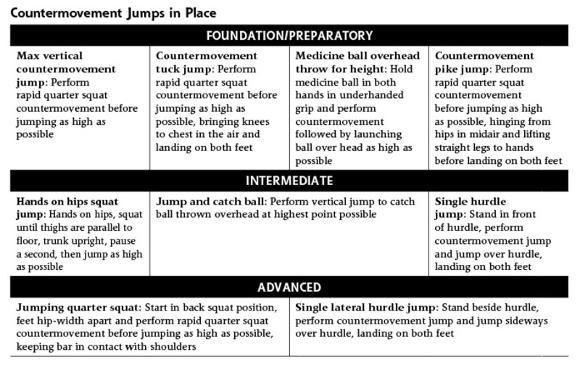Many types of jumping movements can be readily arranged into a progressive curriculum by the imaginative coach who is able to link the principles of sound technique to the jumping context. As long as the athlete is able to generate the required level of concentric force through a countermovement, jumping upwards onto an object is often less demanding than jumping onto the same level, perhaps because many jumps onto an object are singular efforts interspersed with recovery as the athlete steps down from the box. This jump is in contrast to many other jumps that involve multiple and successive repetitions with no recovery between reps because ground contact needs to be minimized.
Some of the exercises introduced in the ground contact context are obviously jumps. The key differential between these and some of the exercises described in this section is the objective of the exercise. Figure 9.11 introduced exercises in which the key deliverable was an efficient and effective ground contact technique that is transferrable to all jumping situations. Contrastingly, other jumps require this technique as a foundation to build on, because the objective of the jump moves to developing horizontal or vertical forces to maximize the height or distance of the jump.

Progressive approach to developing jumping skills that are transferable to a multisport context: countermovement jumps in place.

Save